Bask in the char-grilled glory of grilling like a pro.
A successful summer grilling season starts with the right tools—and the right heat. We’ve put together a rundown of charcoal vs. gas (both are equally good contenders) and indirect vs. direct heat. It all depends on what you prefer, what you’re cooking and how much time you have.
Love smoky flavor? We do, too. That’s why we offer planks and wraps that make it easy to enjoy fresh, smoked flavor. We also have Lump Charcoal and Charcoal Briquettes made from 100% natural hardwood—a go-to for charcoal-grilling purists.
Charcoal vs. Gas
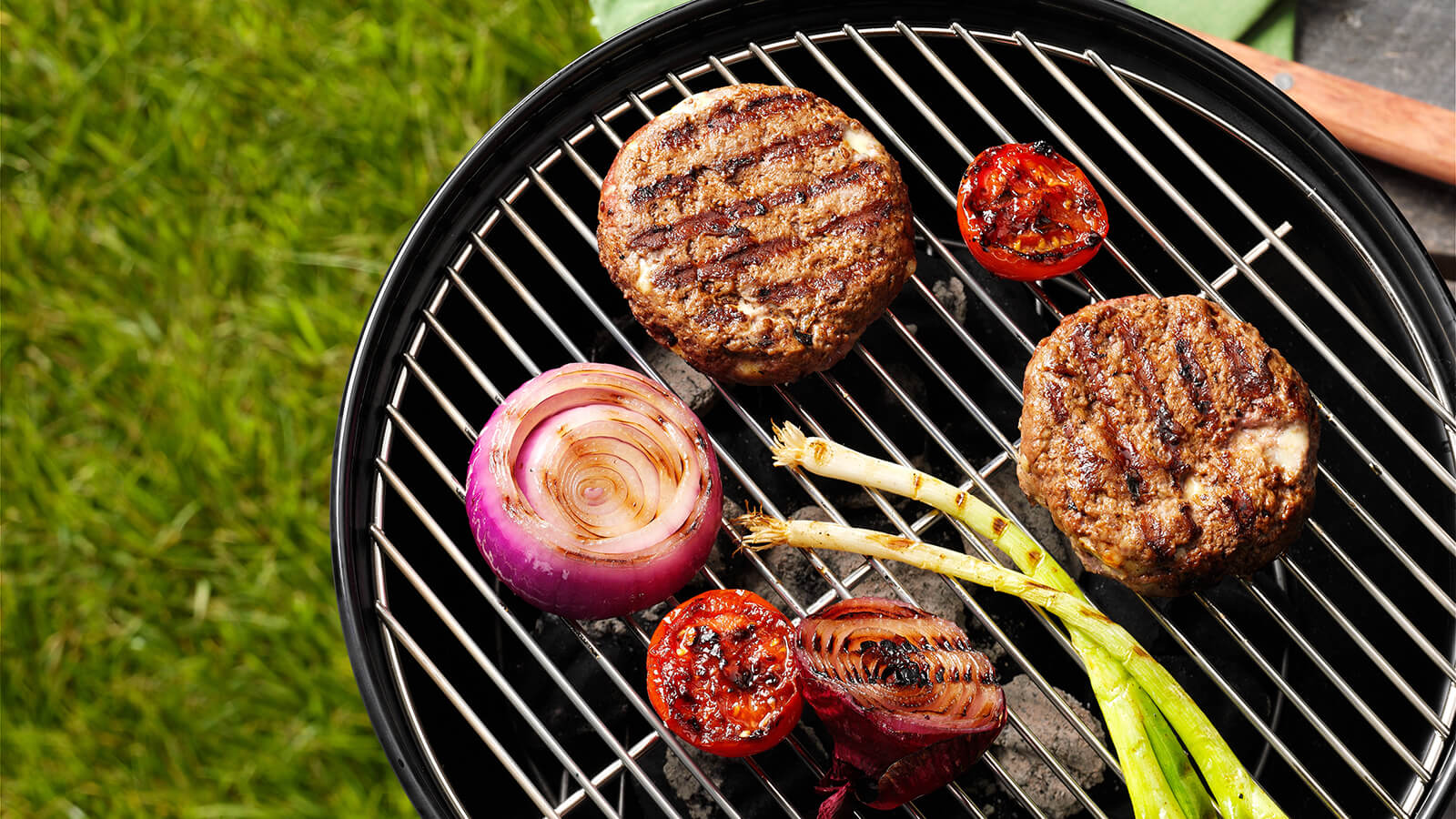
Some call it the “grate debate” of grilling season—charcoal, or gas? It’s not so much a question of quality, but convenience.
If you’re cooking on a weeknight, it’s easier to turn on the gas grill and get cooking. Gas grills are also quick to heat and easier to clean. However, charcoal does add a delicious, smoky flavor to grilled meat, seafood and vegetables. Serious grillers may use both kinds. It’s a matter of personal preference!
If you’re going to take the charcoal route, make sure you use the best. It’s the foundation for everything you grill, after all. We offer Charcoal Briquettes and Lump Charcoal made from 100% all-natural hardwood. Both are solid choices for charcoal purists.
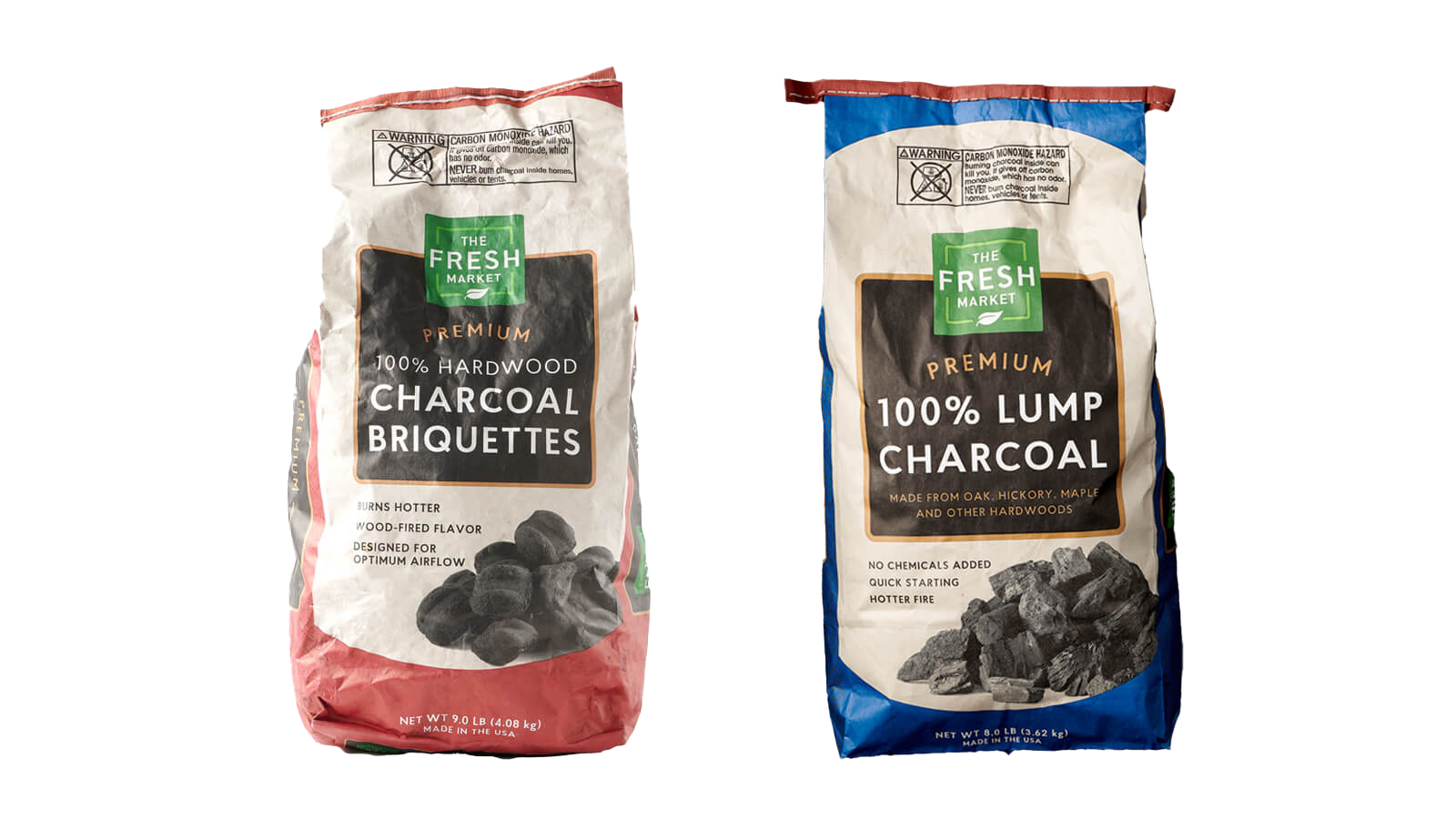
The Fresh Market Charcoal
Lump charcoal is charcoal in its most natural form. Ours lights quicker and burns hotter and faster than regular briquettes, making it a great choice for searing in flavor. We also offer Charcoal Briquettes which, like our Lump Charcoal, are made from hardwood rather than blended materials. With a slow burn that lasts longer, they’re a great choice for foods that take a bit longer to grill.
Direct vs. Indirect Heat
How you place your food over the heat source affects the cooking. Direct heat involves cooking food directly over hot coals or the burners of a gas grill. Indirect cooking requires placing the food away from the heat source so it cooks via radiant heat, although some foods may be seared over direct heat first before being moved to the cool side of the grill to cook indirectly.
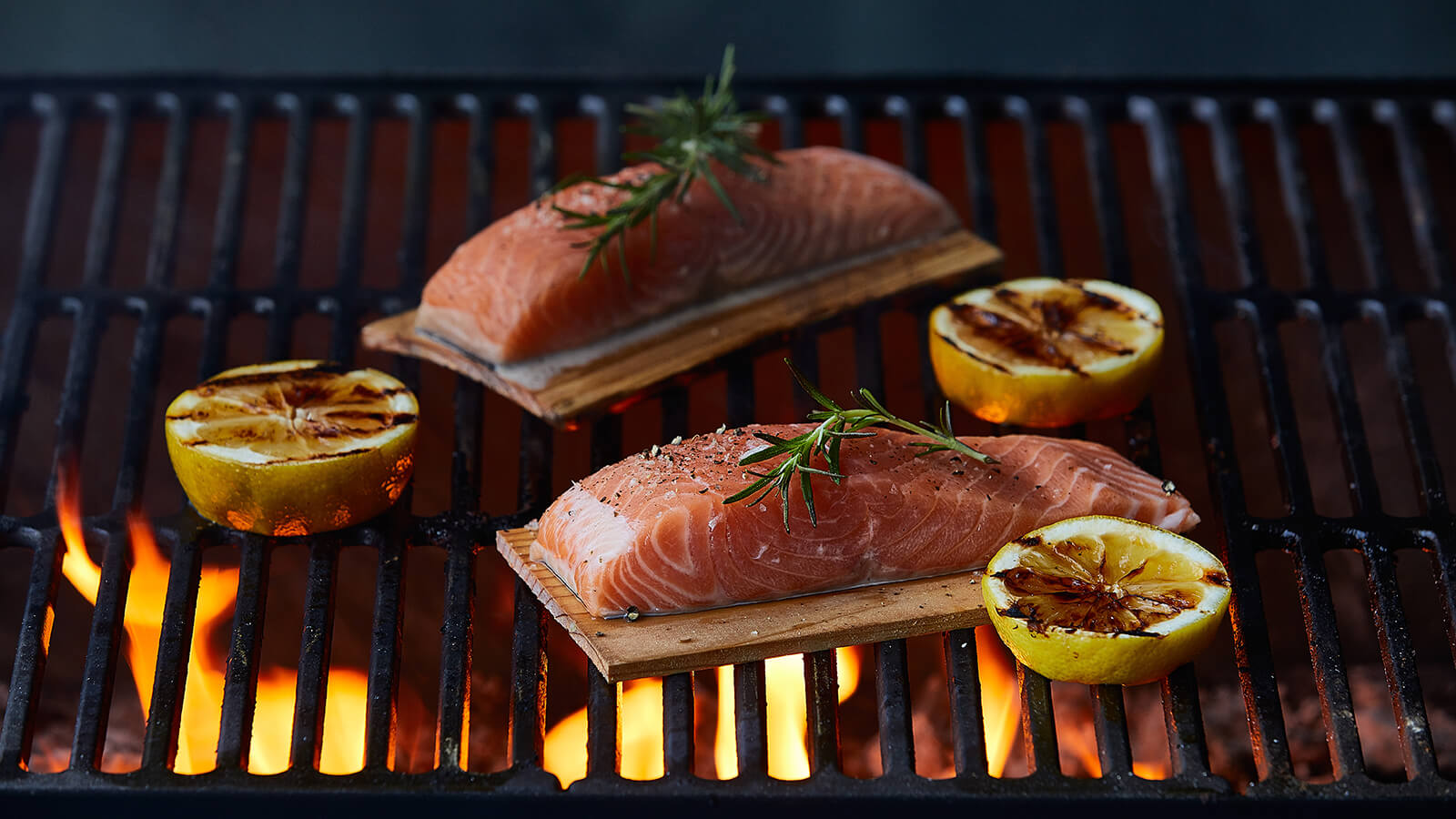
Be Direct
Direct heat is ideal for foods that cook in about 20 minutes or less. Think burgers, steaks, boneless chicken and frankfurters. If you’re using a charcoal grill, you’ll need an empty area where you can move the food that cooks too quickly or drips fat, causing flare-ups. Leave a perimeter around the mound of coals for this purpose. If flare-ups occur with a gas grill, move the food to a turned-off burner.
Wood planks are a great way to cook using direct heat. If you’re planking your own meat or seafood, be sure to soak the plank in water for at least an hour before grilling.
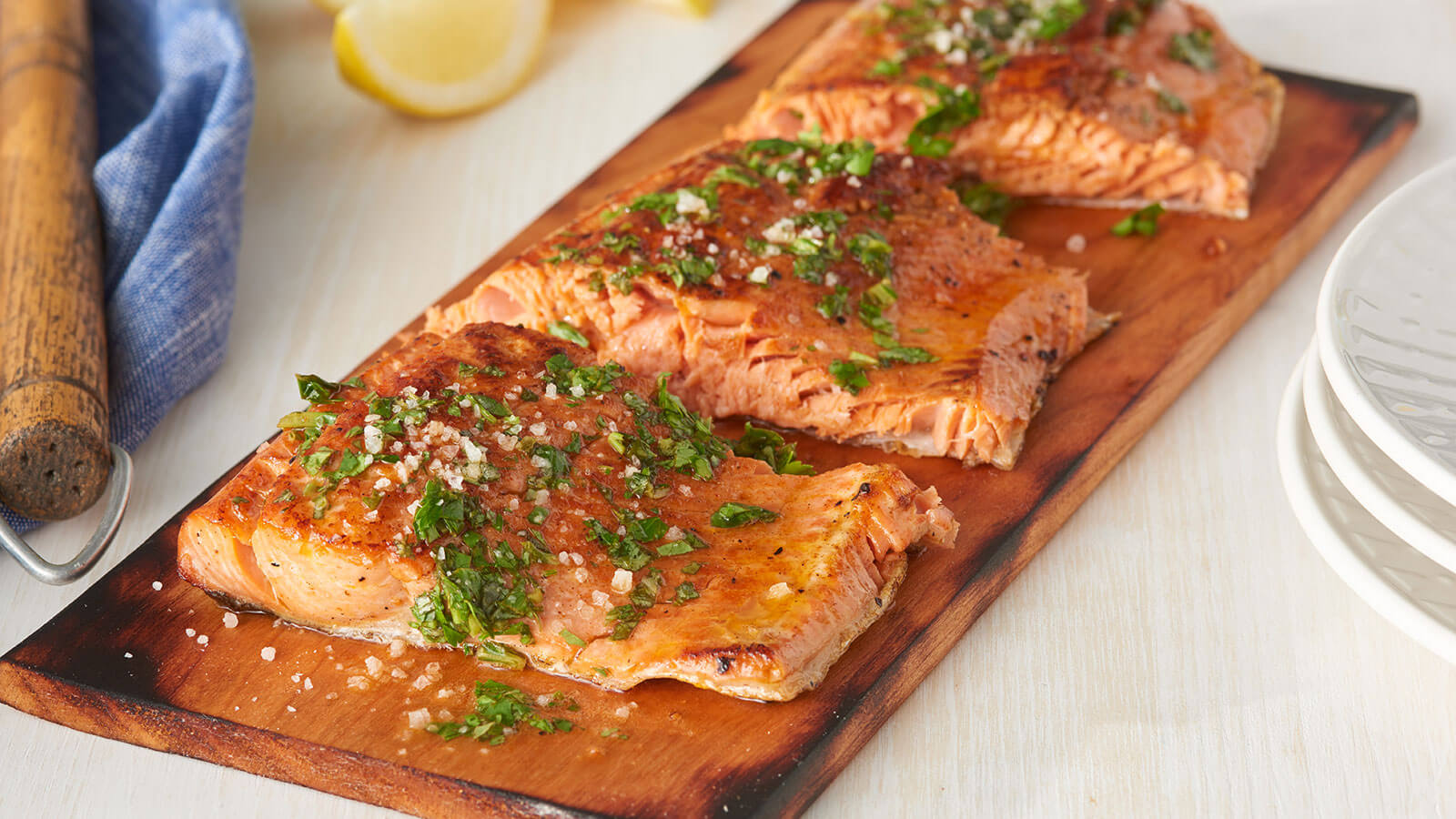
Smoky Salmon Recipes
Our recipe for Cedar Grilled Salmon makes it easy to cook an impressive dish. The smoky flavors of the cedar complement the richness of our Wild Salmon. Herbaceous oil adds brightness to the dish without overpowering the fish. Top if off with sea salt and a fresh squeeze of lemon.
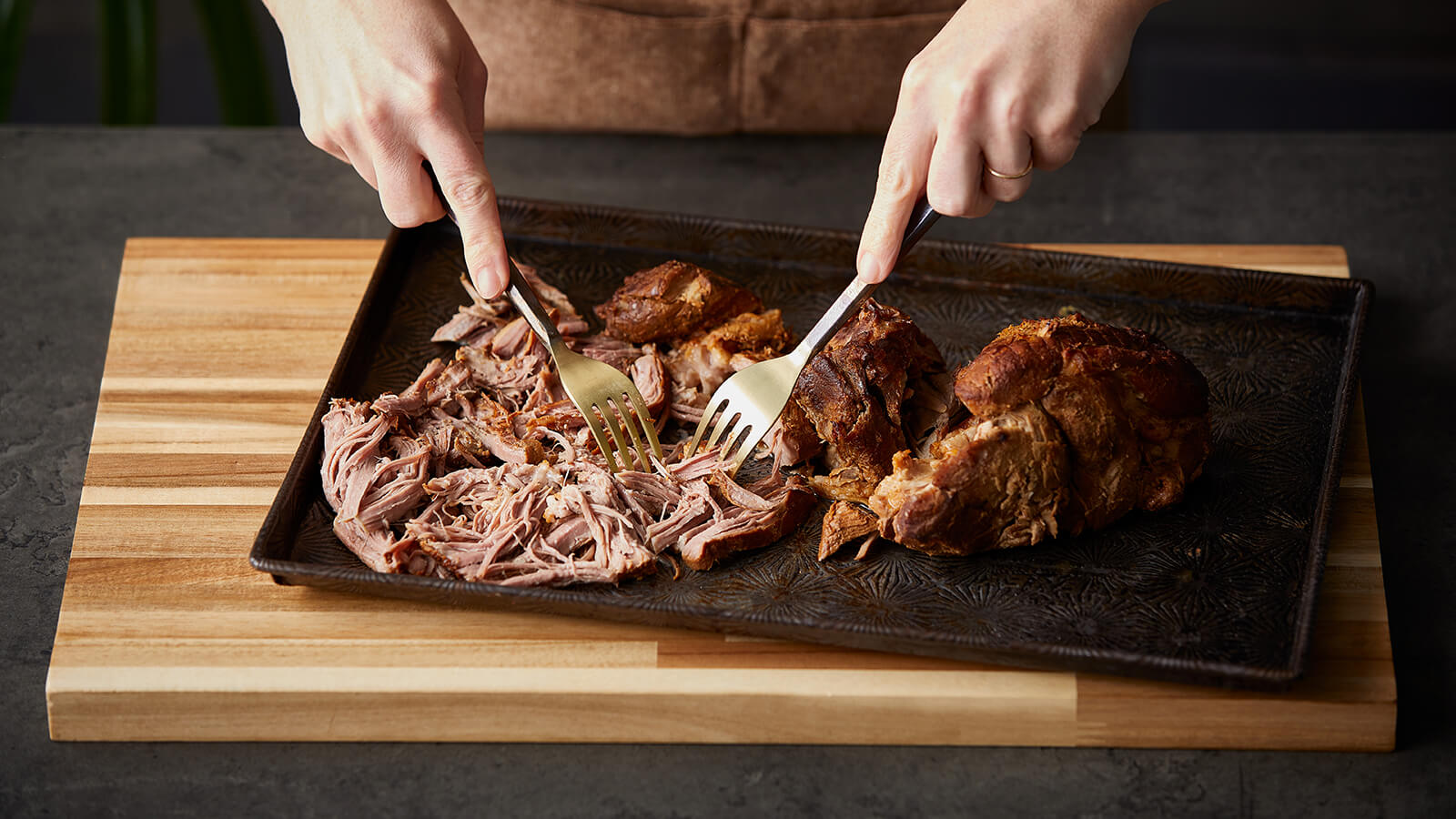
Indirect Heat
Indirect heat is reserved for large cuts of meat, like roasts, bone-in or whole chickens and ribs. If you’re using a charcoal grill, heap the coals on one side. For a gas grill, preheat to high heat, then turn one burner off. Then, place a disposable aluminum pan on the empty side of the fuel bed. Pour about 2 cups of water into the pan and cook your food over the drip pan.
Barbecuing or smoking involves cooking with added smoke from wood chips that have been soaked in cold water for at least 30 minutes. For a gas grill, use wood chips placed in a metal smoker box—whichever is recommended for your brand of grill. Pro Tip: Start with dry chips in the box, let them ignite and then add drained wood chips.
Love the taste of smoked pulled pork? Try our recipe for Smoked Pulled Pork on the Grill. We use quality charcoal combined with wood chips. The key to success is keeping the temperature inside the grill around 250°F.
Know Your Heat.
A general rule of thumb for grilling is that high heat is 450°F to 600°F, medium heat runs 350°F to 450°F and low heat is 275°F to 350°F. It’s easy to adjust the heat on gas grills, as most of them include thermometers in their lids. You can also place an oven thermometer in the grill.
The heat in a charcoal grill can be changed by the amount of coals used (lots of charcoal for high heat, less for low temperatures). If you need to check, simply drop a candy thermometer (with a round glass face and metal stem) through the top vent of the lid.
Keep Your Lid On. Fire needs oxygen to stay alive, so a closed lid reduces the risk of flare-ups—most of which are caused by marinade or fat dripping from your food onto the heat source.
If you have a charcoal grill, open and close the vents on the lid and beneath the kettle to control air flow. For high heat, keep the vents wide open to feed the flame. For medium heat, close them halfway to reduce the amount of oxygen so the fire burns at a lower temperature. Close the vents only when you want to shut the grill down.
